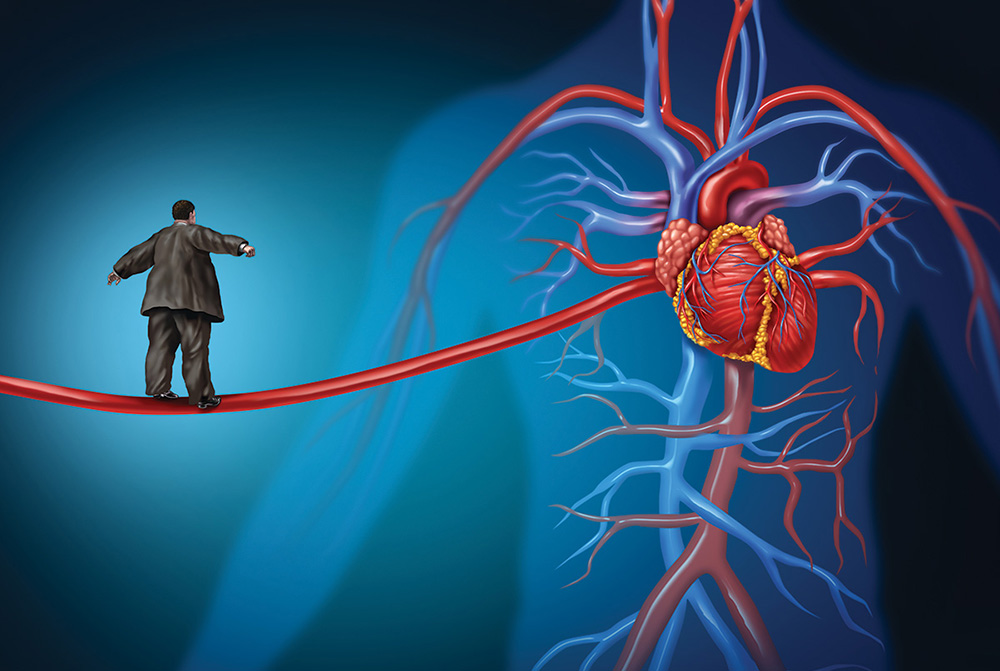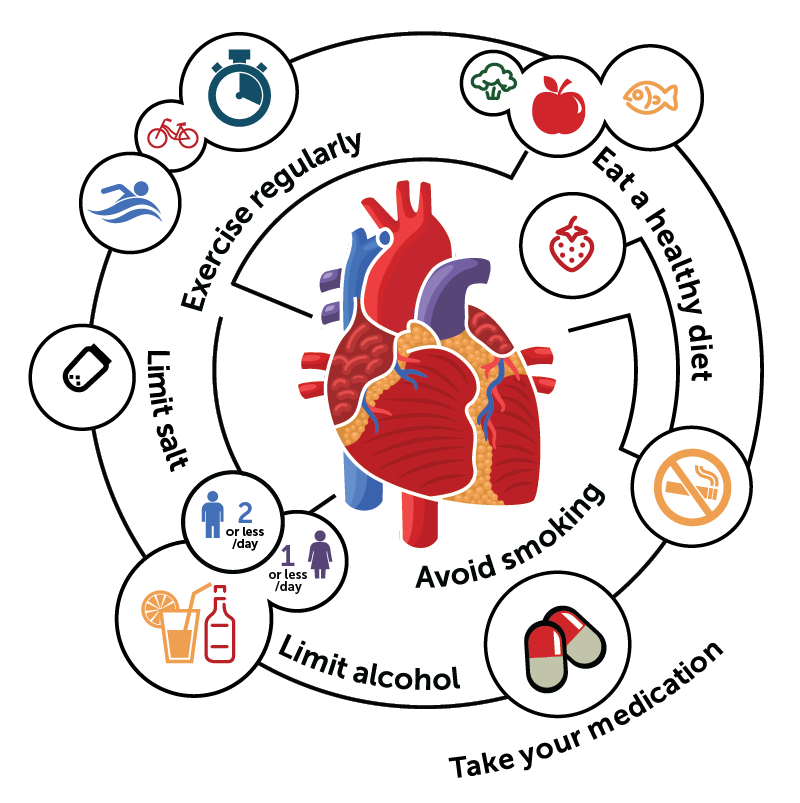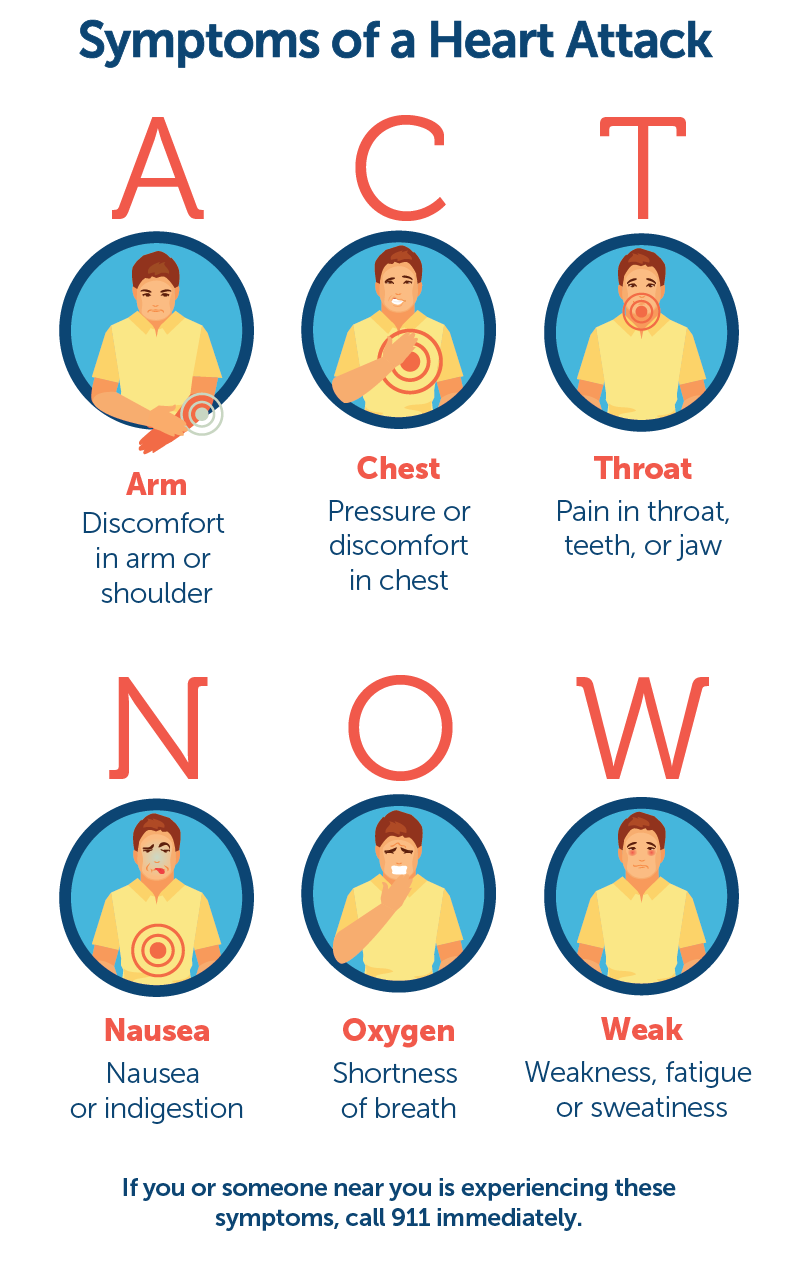
Key points:
- If you’re living with diabetes, you’re twice as likely to develop heart disease.
- Heart disease can include heart attack, stroke, heart failure, irregular rhythm or beat (also called arrhythmia), and problems with the valves inside the heart.
- A healthy lifestyle and diet are your first line of defense.
The health of your heart directly affects the health of your entire body. As your heart pumps blood through your blood vessels, oxygen is supplied to your other organs, including your brain, and to every cell in your body. Conditions that affect the heart can make it less efficient in delivering oxygen. This can potentially harm the ability of other organs to function, and can lead to other diseases like kidney disease.
If you have diabetes, caring for your heart is very important. Those with diabetes are twice as likely to develop heart disease, and may experience it up to 15 years earlier compared to those who do not have diabetes. Heart disease affects about one in 12 Canadians aged 20 years and older. It is currently the second leading cause of death in Canada. Heart disease includes:
- heart attack
- stroke
- heart failure
- irregular rhythm or beat (also called arrhythmia)
- problems with the heart’s valves, which are inside the heart.
Does diabetes affect your heart?
Diabetes can lead to high levels of glucose in the blood. Over time, high blood glucose can damage the blood vessels throughout the body, including those of the heart. This high blood glucose can also damage the nerves that control the heart and other organs, leading to other health issues. Managing your diabetes with healthy lifestyle choices and medications will lower your risk of heart disease. The helpful actions you can take apply to both diabetes and heart disease, and so will benefit you in many ways.
How do I lower my risk for heart disease?
Some risks for heart disease cannot be controlled.
- Age: the risk of heart disease increases with age.
- Family history: if there is heart disease in your family, then it is more likely that you may develop it.
- Gender: men are more likely to have heart attacks compared to women. However, the risk for women increases after menopause.
Fortunately, there are risk factors for heart disease that you can control. The steps you take to protect your heart will also help with managing diabetes.
- Get regular physical exercise. The World Health Organization defines regular exercise as:
- 150 to 300 minutes of moderate to vigorous intensity physical activity each week or
- 75 to 150 minutes of intense activity each week.
- Exercise should include activities to strengthen muscles.
- Always speak with your health care professional before starting a new exercise series to ensure that it is right for you, especially if you have not been recently active.
- Avoid smoking. If you need help to quit, ask your health care team for assistance.
- Eat a balanced, healthy diet.
- Control your blood pressure.
- Control your cholesterol.
- Manage your blood glucose levels.
- Maintain a healthy weight, according to your body mass index (BMI).

Tips for reducing blood pressure
You can lower your blood pressure and help reduce the risk of heart disease in many ways.
- Reduce salt intake. Excess salt can increase blood pressure.
- Exercise regularly.
- Do not smoke.
- Limit alcohol intake. Drinking in moderation means up to two drinks a day for men and one drink or less for women. If you do not drink, don’t start.
- Take the medication prescribed by your doctor to reduce your blood pressure. Check with your pharmacist to be sure you are taking your medication correctly.
- Eat a healthy diet. The DASH eating plan (Dietary Approaches to Stop Hypertension) has been shown to help lower or control blood pressure. It encourages choosing:
- foods low in salt and saturated fat (avoid fatty meats and full-fat dairy products)
- fruits and vegetables
- whole grain foods
- lean meats, fish, poultry, beans and nuts
- fat-free or low-fat dairy products
- foods rich in potassium, calcium, magnesium, fibre and protein.
About high blood pressure
One of the most important ways to lower your risk of heart disease is to control your blood pressure. Blood pressure is the force of blood pushing against your arteries as the heart pumps and as it rests between pumps. When blood pressure is too high for a long period of time, it can damage the blood vessels. Damaged blood vessels are less able to deliver blood to vital organs, including the heart.
High or uncontrolled blood pressure (hypertension) is one of the strongest risk factors associated with heart disease. Many scientific studies show that high blood pressure increases the risk for heart failure, irregular heartbeats, kidney disease, heart valve diseases, heart attacks, and strokes.
Many people cannot feel that they have high blood pressure, but sometimes they may be aware of chest pressure, chest pain, headaches, and vision changes. The only way to know for certain is by checking your blood pressure at your doctor’s office, at a local pharmacy or with a home monitoring device. If you are feeling fine but notice that your blood pressure is high or higher than normal, do not panic but follow up promptly with your doctor.
Different people, different blood pressure targets
There are two numbers in a blood pressure reading. The top (or first) number is the systolic blood pressure. This is the pressure of the blood pushing against the artery walls when the heart beats. The bottom (or second) number is the diastolic blood pressure. This is the pressure of the blood against the artery walls when the heart is at rest between beats.
A person’s ideal (or target) blood pressure will depend on their age and any risk factors they have, such as a history of diabetes, stroke, or heart disease. For example, the target blood pressure for an adult who has diabetes and high blood pressure is less than 130/80 mmHg.
If you have high blood pressure, your family doctor can determine what your blood pressure target should be, and can help you to reach your target.

Watch for these sudden symptoms of stroke:
- Numbness, tingling or weakness to one side of your body
- Confusion, difficulty speaking, or difficulty understanding speech
- Severe headache
- Vision changes
- Trouble with walking, or problems with balance
Heart attack and stroke
Chances are you already know that heart attack and stroke can harm a person’s health and quality of life. A blood vessel can be blocked due to a blood clot. A blockage can also be caused by a condition called atherosclerosis. This is the narrowing of the vessel due to the build-up of plaques, which are made of fat and other materials. When a vessel supplying the heart or brain is blocked, the supply of blood and oxygen to those organs is decreased. The lack of oxygen can damage the heart or brain.
- A heart attack starts with a blockage to a blood vessel that supplies the heart muscle.
- An ischemic stroke starts with a blockage to a blood vessel that supplies the brain.
- A hemorrhagic stroke can result when a weakened blood vessel in the brain ruptures, resulting in bleeding in the brain.

If someone near you is experiencing these symptoms, call 911 immediately.
- Chest discomfort
- Chest pain or chest pressure
- Sweating
- Nausea
- Shortness of breath
- Upper body or back pain and discomfort
- Dizziness and lightheadedness
- Sudden extreme fatigue
Pay attention to symptoms
As the ACT NOW and FAST graphics illustrate, symptoms don’t always point to a heart attack or stroke. It is important to pay attention when they occur suddenly.
- If you experience sudden symptoms, get medical attention immediately.
- Women can experience a heart attack without feeling any chest pain or chest pressure. Instead, they may notice symptoms including shortness of breath, upper abdominal pain, lightheadedness, or upper back pressure.
- Sometimes, the symptoms of a stroke come and go within a few minutes. The person may forget about the brief symptoms. However, the symptoms may be a sign of a transient ischemic attack (TIA), sometimes called a mini stroke. A TIA is a serious condition that requires medical attention. A doctor should be seen for an assessment.
There are many ways to care for your heart. A healthy lifestyle and diet are your first line of defence. Controlling your blood pressure and blood glucose levels significantly reduces your risk of developing heart disease.
When needed, medications work together with these strategies to help your heart be the healthiest it can be. If you have questions about heart health, speak with your health care team.
Resources
WRITTEN BY: Gloria Lau, HBSc, PharmD, ACPR, RPh, a clinical pharmacist with the Acute Ambulatory Care Unit at Women’s College Hospital in Toronto, Ontario.
